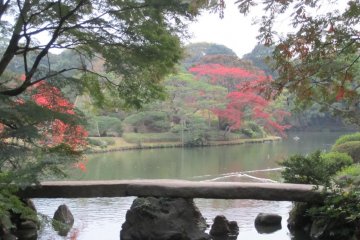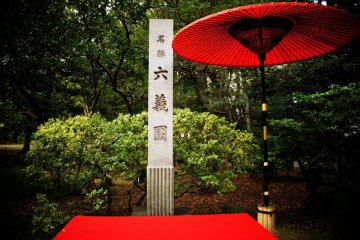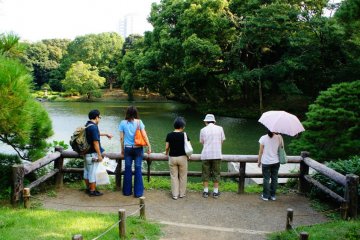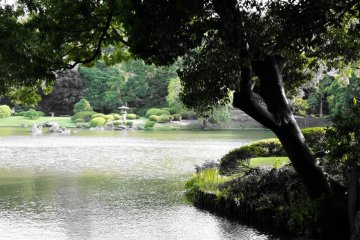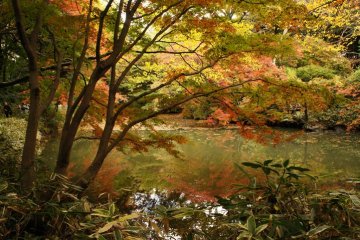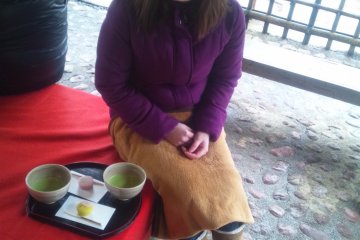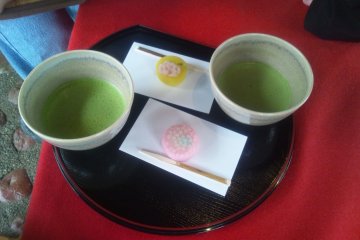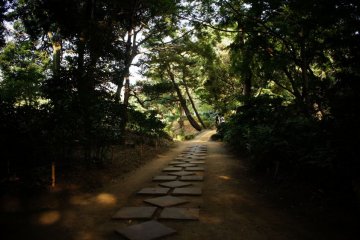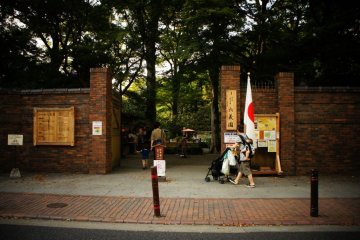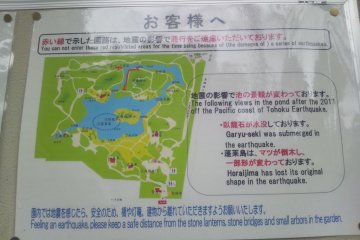I like the fact that Japanese ideas of manliness are different from those ingrained in my North American brain. I used to snicker at big sumo wrestlers named after pretty blossoms, but I now appreciate the charm of a “noble flower” like Grand Champion Takanohana, whose heyday coincided with my sumo-fandom peak.
So gentlemen, if lovely gardens full of pink petals threaten your machismo, remind yourselves that great samurai warriors enjoyed meandering through the springtime colorburst and fiery fall foliage of spaces such as Tokyo’s Rikugien. Just a short walk from Komagome Station on the Yamanote line, this serene oasis makes for a fine couple of hours’ respite from more testosterone-laden pursuits.
I was fortunate enough to make my first visit to Rikugien on a cold and rainy March Saturday when the place was nearly empty. I’m sure the garden would be nice on a more communal, fair-weather occasion, but having such a large and well-manicured green space to ourselves in the center of Tokyo more than made up for the inclement weather. Gene Kelly, anyone?
Though my companion and I entered from the often-closed Someimon Gate across from Komagome Station, the more reliable main entrance is a 5-minute walk down the street. Either way, it’s tough to get lost when you are looking for a giant park. Three-hundred yen gets you into the grounds with an English-language pamphlet explaining the main attractions. A free Japanese-language guide service is available on Sundays, but for English you might try your luck with the volunteers at the Tokyo SSG Club.
I suppose I should choose six highlights of Rikugien, since the name is related to that magic number from Japanese Waka poetry (the inspiration behind the garden’s organization), but only three features stand out in my memory—so visit each twice. The first is a little gate, Naitei Daimon, inside which people of unexceptional stature can touch all four corners with hands and feet spread triumphantly. It’s not such a great attraction, but small details amuse me.
Highlight number two is the tea-house where we shared macha and anko cakes (anko is a sweet bean-paste) while contemplating the pond from beneath a cozy roof. I learned, and promptly forgot, the names of all the little tea tools and sweets involved. The tea house gets busy on sunny days, so the rain was a welcome queue-repellent.
And finally, the third and highest highlight of Rikugien for me is the view from Fujishiro-toge, the 35-meter apex of the garden. Surveying the garden below, I was again thankful that the drizzle on this fine day had kept most visitors away. A modern samurai warrior seeking refuge from the crowds...



